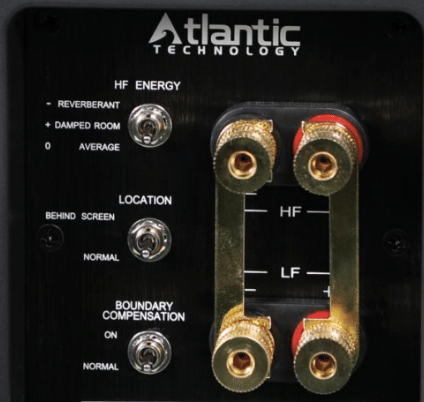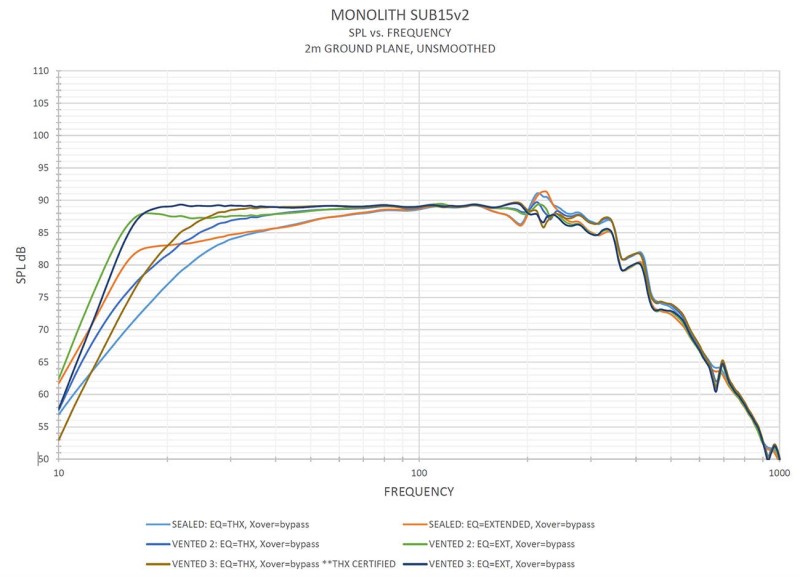Your Subwoofer has an EQ – How Do You Use it with Audyssey or Dirac?
There seem to be equalizers (or EQs) everywhere! Your AV receiver has room correction (and manual EQ). Your subwoofer has a couple of bands of EQ (whatever that means). Heck, some of your speakers have switches on the back that EQ their sound. What’s the deal with all these EQs? Specifically, with your subwoofer – should you use the EQ on it or with your Audyssey or Dirac room correction? Where do you EQ first or at all? Let’s discuss!
What is an EQ?
An EQ or an equalizer changes the output of your sound. It does this by increasing or decreasing the volume of certain frequencies. When Audyssey or Dirac applies an EQ to your subwoofer, it is doing that (plus more) in an attempt to get a flat frequency response from your system. With both of those room correction systems, you can adjust the target curve so that “flat” is no longer the goal but something else. Maybe you prefer a little more bass or more treble (or both). Either way, your room correction can apply the EQ as you see fit.
Speaker Switches
Before we talk about EQ, your subwoofer, and your Audyssey or Dirac room correction, let’s talk about speaker switches. Some speakers (generally center speakers but sometimes others) come with switches on the back. These will be labeled usually based on the placement of the speaker. Check your manual for more information. In every case, you should set your switches to the preferred (or suggested) setting BEFORE you run your room correction program. If you get to the end of your calibration and think that specific speaker sounds weird, you can adjust the switch but you’ll want to run the room correction again.

EQ and Your Subwoofer
Subwoofers interact with your room more than any other speaker. Therefore, they tend to need the most EQ. Manufacturers have been including EQ in subwoofers for years to give owners the ability to adjust the subwoofer’s output based how the bass interacts with the room. Most owners have no idea how to do this nor do they have the proper equipment and microphones.
In modern times where we have easy access to Audyssey and Dirac (and other) room correction programs, an EQ built into your subwoofer is fairly useless. For most people, you are best off leaving the subwoofer EQ alone and letting Audyssey or Dirac adjust your subwoofer’s output.
But that’s not the answer you wanted, is it?
But I’m a Power User!
So you’ve got a measurement microphone, REW, and a lot of time on your hands. You want to squeeze all the power out of your audio system and are willing to do whatever it takes. There is an EQ in your subwoofer and you want to know where and when to use it.

First, let’s be clear that the EQ that Audyssey and Dirac apply is more powerful and nuanced than most (if not all) EQs that are built into consumer subwoofers. Generally, your room correction should do the bulk of the work because it is best at it. More importantly, your subs should be set in mono so that they are EQ’ed as one. When you try to use the EQ in your subwoofer, you are only EQ’ing that single subwoofer. You may make the response flatter for that specific sub, but you are making it worse for your two subwoofers working together. You could be doing more harm than good! But, again, that’s not what you wanted to hear. So there are two possible ways to use the built-in EQ in your sub – before or after you run your room correction.
EQ Before
Adjusting your subwoofer EQ before you run Audyssey or Dirac will allow your room correction program to fine-tune your subwoofer’s output more granularly (in theory). Your goal when setting your EQ isn’t to adjust it to your taste. You should be getting as flat a response as possible so that your room correction can fine-tune. Any adjustments away from flat will be removed by your room correction.
Again, if you EQ before you run your room correction, you very well be doing more harm than good. If you only have a single subwoofer, EQ’ing before can help. But if you have dual subs, we highly recommend you not EQ before you run your room correction.
EQ After
If you are going to adjust your subwoofer’s EQ, do it after you run Audyssey or Dirac. When you EQ before, you are really just trying (and probably failing) to make things easier for your room correction. Your efforts may or may not give you an audible improvement. When you EQ after your run Audyssey or Dirac, you can adjust your subwoofer’s output to taste. While you can (and should) do this by adjusting the target curve of your room correction, you can do it with your subwoofer’s EQ as well. If you prefer a bit more “kick you in the chest” bass, you can boost those frequencies. If you have neighbors that complain about your sub at night, maybe you can have a preset that helps out.
Take Away
With modern AV receivers and room correction programs, subwoofer EQs are all but obsolete. While you can play with them, most if not all of what they can do can be done better and with less effort and cost on your part by your room correction. If you are the type that doesn’t believe in room correction, then maybe you’ll find the built-in EQ useful. But, then again, you probably don’t think you need a subwoofer anyhow.


